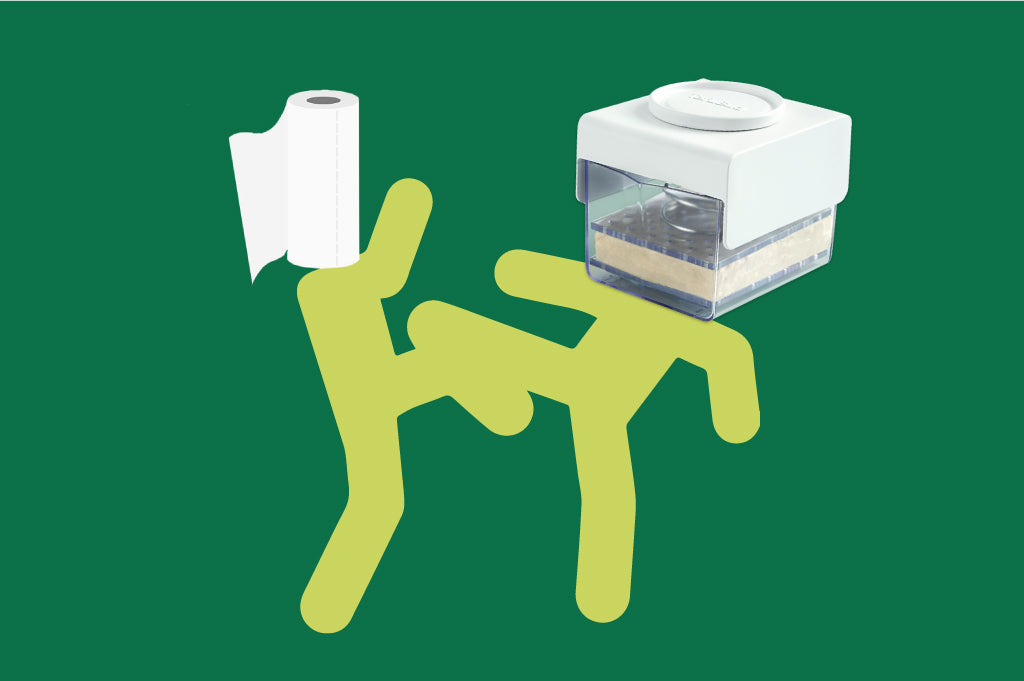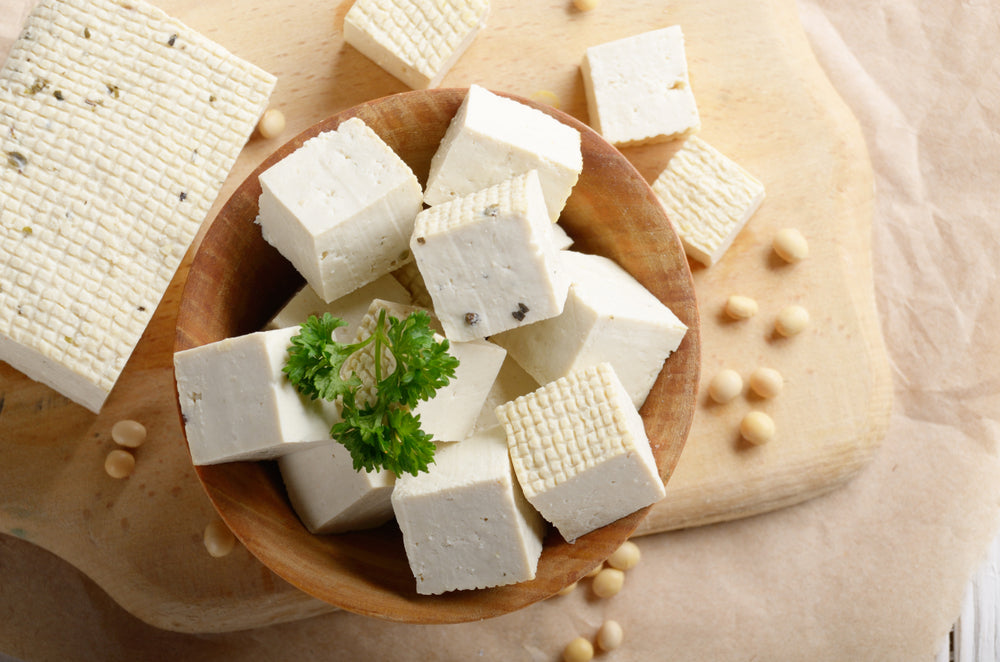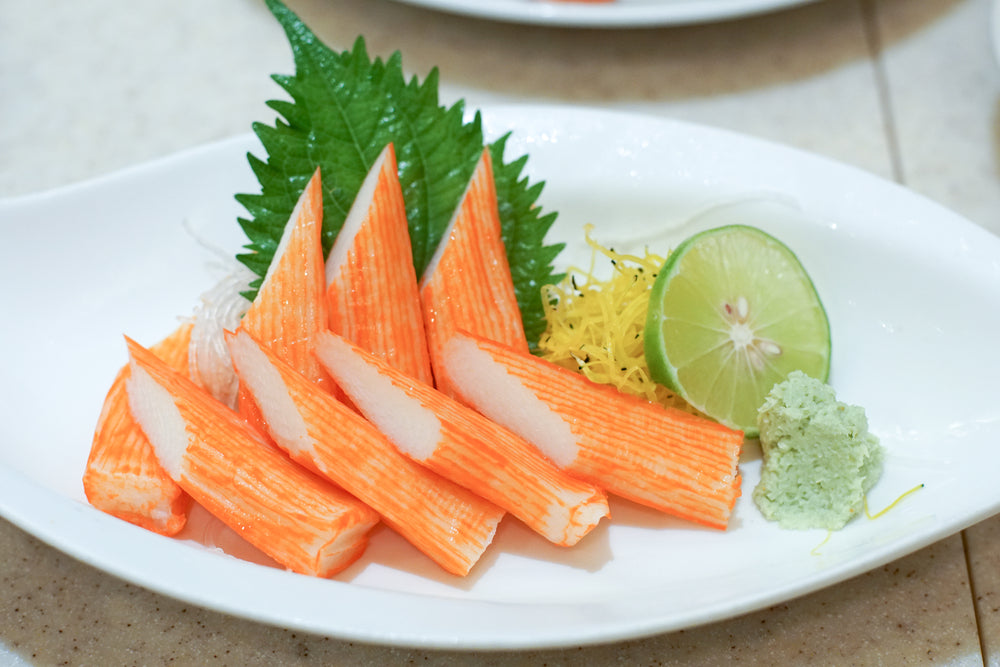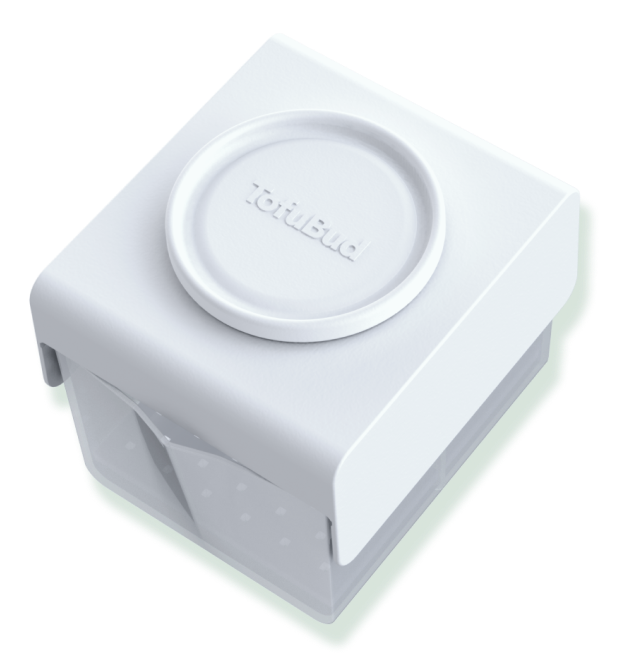Tofu is a popular vegetarian protein and for a good reason - it’s healthy! Chock-full of protein and minerals, and mild enough in flavour, tofu makes a delicious addition to just about any dish.
Asian dishes like stir-fries and pad thai outperform themselves with crispy tofu soaking up the spicy sauces. This soybean-based protein is also a fantastic addition to pasta or simply pan-fried and baked on its own.
If tofu isn’t something you’ve tried making at home yet, consider adding it to your list. Along with homemade bread and cookies, homemade tofu is leaps and bounds better than store-bought versions.
Homemade tofu tastes fresh and creamy, with a hint of sweetness. Made from soy milk turned into curds and pressed, it requires just a few ingredients.
The process of making your own tofu requires soy milk and a coagulant. This might be something you’re unfamiliar with, so we’re here to help you get it right!
Follow our guide below to learn about tofu coagulants and how to transform your soy milk into tofu so you can enjoy the fruits of your labour at home!
First, let’s start at the beginning.
What is coagulation?
Coagulation occurs when you use heat, enzymes, mechanical manipulation, or acids to change a liquid protein's structure to thicken or completely solidify it.
In terms of making tofu, a coagulant agent is added to thicken the soy milk into curds. You can then press it into a solid block.
What is the best coagulant for tofu?
You can use a few different ingredients to cause coagulation in your soy milk, and all of them will affect your tofu’s texture. You can use acids such as vinegar and lemon juice as a tofu coagulant, but the resulting tofu is gritty and sour. It’s best to stick to salt coagulants for creamy, slightly sweet tofu. The best ones to use for at-home tofu-making are the salts listed below.
Gypsum
Gypsum, also called calcium sulfate, is the most widely used coagulant in making tofu. You’ll often find calcium sulfate in tofu incredibly inexpensive to make, as it’s mined from geological deposits and requires no extra refining.
Using gypsum in tofu creates a soft-pillowy texture with a bit more sweetness than other coagulants.
Nigari
Nigari is a chloride-based salt, usually in the form of magnesium chloride or calcium chloride. Nigari is produced from sea-water and comes in the form of liquid nigari, coarse granules, or fine crystals.
Nigari tofu has a very slightly bitter taste compared to using other coagulants to make tofu.
Magnesium chloride tofu coagulates more quickly than gypsum tofu, so your curds will be smaller and the resulting tofu firmer.
Which is better for making tofu?
Gypsum is the most versatile tofu coagulant, which creates a beautiful silky texture with a great taste. It won’t impart any bitter flavour like nigari will do, so it’s our favourite to make homemade tofu.
However, if your recipe calls for a firmer version of tofu, we suggest using nigari.
How to make your own tofu
Here’s a quick breakdown of the cooking steps required to make tofu at home.
Tools and ingredients required to make tofu at home
You need the following tofu-making tools and ingredients to get started:
- A tofu mould, made of bamboo, wood, or plastic. Any mould that has holes in the bottom for drainage during pressing is excellent.
- A mould-liner cloth or a simple piece of lightweight fabric, like unbleached muslin.
- 3 cups of rich soy milk. Store-bought doesn’t thicken nicely, so stick to freshly made soy milk from an Asian grocery store or create your own at home.
- 1 and ½ tsp packed gypsum or another tofu coagulant of choice
- 2 tsp water
Directions
- Get out a large tofu mould for steaming your milk. Make sure the mould fits in your steamer tray.
- Boil a large pot of water to use for steaming the milk.
- While the milk is steaming, mix your gypsum into the water until it dissolves.
- As the water comes to a rolling boil, turn the heat down for a steady flow of steam.
- Place the steamer on top of the hot water with the empty mould inside.
- Combine the soymilk and gypsum mixture.
- Pour it into the mould until the milk is 1 to 2.5 in deep.
- Place the mould in the steamer tray, leaving the lid slightly ajar to minimize condensation.
- Steam the soy milk until it sets. For 1-inch deep milk, it takes approximately 6 minutes.*
- Lift and remove the steamer tray for 2 min. Remove the tofu mould from the steamer and let it cool to room temperature.
- Cover the tofu and chill in the refrigerator for at least 4 hr before unmolding.**
- When you’re ready to unmold, let the tofu sit at room temperature for 15 min.
- Loosen with a knife, and remove the tofu from the mould.
- Put it in a tofu press for 15 minutes to remove the majority of the excess water. ***
* The tofu is fully-set when it jiggles after being shaken in the mould, or a toothpick inserted leaves a small hole on the tofu’s surface.
** tofu can remain refrigerated in the mould for up to 3 days.
*** If you don’t have a tofu press, wrap the tofu in paper towels and press with a chopping board or between two heavy plates.
Homemade tofu FAQs
- You can also use Epsom salts to set your tofu, but the results are slightly grainy, so skip it in favour of other, better performing coagulants.
- Make sure you’re buying food-grade gypsum, not industrial-grade, which isn’t safe for consumption. Find food-grade gypsum at local Asian grocery stores, health-food stores, or online through Amazon or other retailers.
- Don’t let the coagulant sit in the warm water too long, as it will begin to set the minute it is mixed. Stir it into the soy milk as soon as you can.
- Don’t overmix the coagulant into the soy milk. Gently stir the mixture.
How do I store coagulants for tofu?
Store your tofu coagulants in sealed containers at room temperature. Keep liquid nigari at room temperature as well. You’ll know the nigari is past its prime when salt crystals begin to form inside the bottle.
Final thoughts on tofu coagulants
Homemade tofu is incredibly inexpensive and downright delicious. We hope you enjoy learning this process and making your own.
Try out the different types of coagulants on your own. You'll find that some work better than others, especially for particular recipes.
Experiment with different textures and flavours by increasing and decreasing the amount and type of coagulant in your tofu recipe. Enjoy the process!








Leave a comment (all fields required)